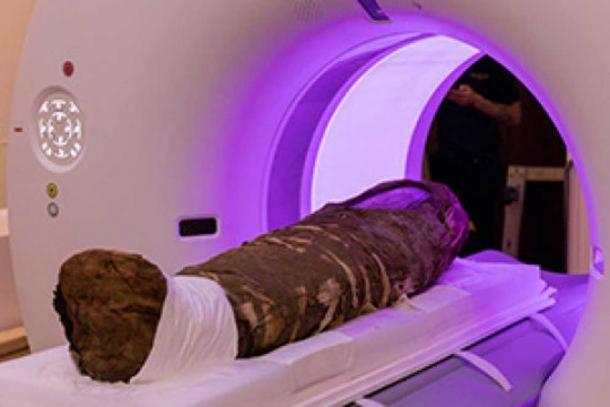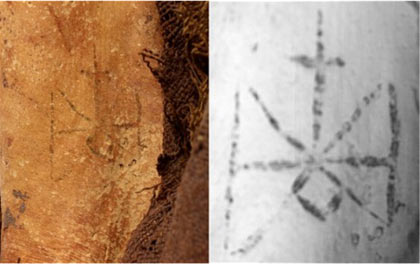Scans Reveal Archangel Michael Tattoo on Mummy’s Thigh
High-tech testing on eight Egyptian mummies from the British Museum by a team of scientists from London uncovered fascinating information, including discoveries that one of the mummies has a tattoo symbolizing the Archangel Michael on her inner thigh.

The 8 mummies were from different eras, from kings to people who passed through the Nile. They came from different walks of life.
One of the mummies was only around two years of age when he died, while others lived to see their 50th birthday.
The oldest mummy tested is more than 5,500 years old, while the most recent lived around 1,300 years ago.
The mummies underwent computerized tomography scans (CAT scans) and infra-red reflectography at London hospital, which revealed what lay underneath their wrappings for the first time.

The scans enabled the scientists to build up a 3D image of the ancient remains, revealing bones, tissue, and vital organs.
The results revealed that the Egyptians suffered from some of the same health issues that plague us today, including high cholesterol, fatty diets, heart problems, and dental issues.
But most fascinating of all was the discovery of a tattoo on a female mummy, aged between 20 and 35, which Dr. David Antoine, curator of physical anthropology at the British Museum, described as “truly a unique and remarkable find”.
The 1,300-year-old female mummy was different from the others in that her remains were found in Sudan and she had been naturally-preserved by the hot and arid environment.
Her tattoo represents the symbol of the Archangel Michael, who features in both the Old and New Testaments, and who was the Patron Saint of Medieval Sudan.
“The tattoo on her right inner thigh represents a monogram that spells Michael in ancient Greek,” said Dr. Antoine. “We have found other examples of the monogram, but never in the form of a tattoo.
Michael is an archangel in Jewish, Christian, and Islamic teachings. In the New Testament Michael leads God’s armies against Satan’s forces in the Book of Revelation, where during the war in heaven he defeats Satan.
Christian sanctuaries to Michael appeared in the 4th century, when he was first seen as a healing angel, and then over time as a protector and the leader of the army of God against the forces of evil.
By the 6th century, devotions to Archangel Michael were widespread both in the Eastern and Western Churches.
The mummies and the detailed results of the scans will be available for the first time in a new exhibition opening on at the British Museum titled “Ancient Lives: New Discoveries”.





